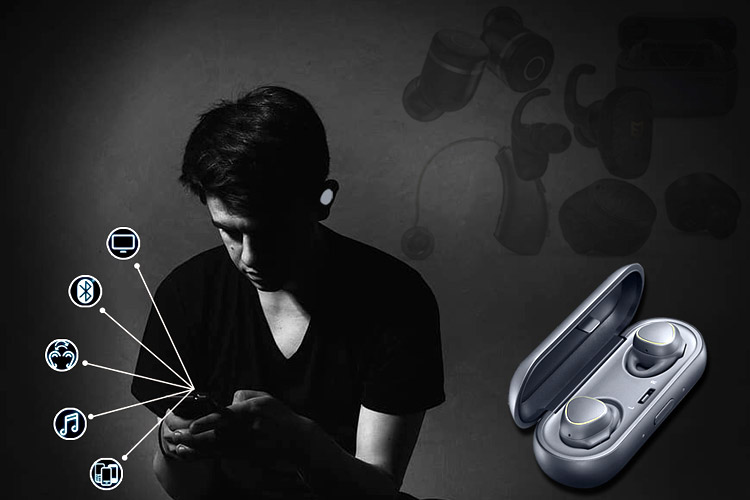
Hearables to talk about are playing a vital role in our lives. The hearing industry has benefited from advancements in health technology. Earbuds, the new in-ear devices are now a must-have and the number of users has drastically increased. CES 2020 also witnessed some of the best hearables by various designers and manufacturers around the globe. Remember the Bragi stereo wireless in-ear headphones we heard of before Apple came up with the smart AirPods?
Inquisitive about the hearable tech, want to know what’s the present and future scenario of this advancing technology? Come, let’s talk about it in detail.
What does "Hearable" mean?
When you talk about hearing technology, what’s the first thing that comes to your mind? Headphones or hearing aids, it’s actually more than that. As put in by Scotland’s National Health Service (NHS) “Hearables are the devices that are primarily intended to allow streaming of media to the device but that also offer a hearing enhancing function not dissimilar to a hearing aid.”
A hearable is a wireless ear-worn device that uses wireless technology to enhance the listening experience. We won’t say that we are in the early adoption phases as more and more companies are combining hearing devices with entertainment attributes. Over the past years, there is a dramatic surge in the number of people opting for smart ear-wear or hearables.
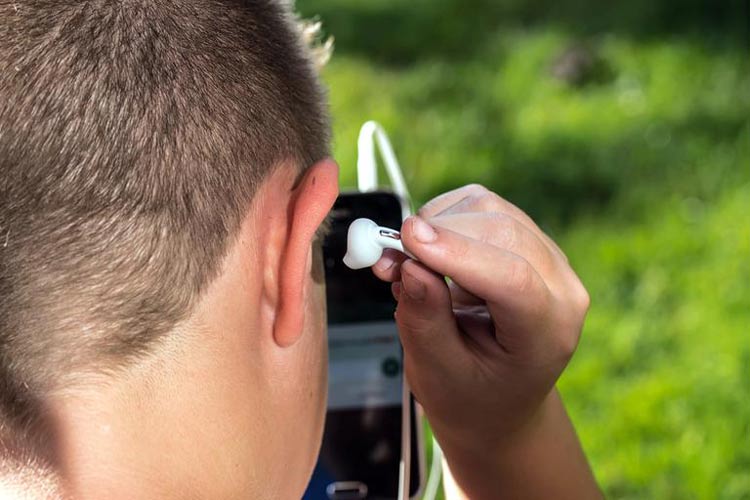
Other than smart ear-pieces meant to enhance the listening experiences, hearables are offering infinite possibilities in the areas of healthcare and fitness too. The hearables of today perform a variety of functions like sleep monitoring, heart rate measurements, calorie tracking, brain waves analysis, and much more. Additionally, the introduction of Alexa, Siri, and Google Assistant is definitely contributing to the rising popularity of hearables.
There are three main types of hearables viz. hearing aids that use a microphone, speaker, and amplifier to amplify sounds and help people with hearing impairment, sound amplifiers that increase the environmental sounds, and earphones/headphones that stream music through various devices like mobile phones, laptops, etc. wirelessly.

Hearables with Biometric Sensors
Owing to ease and enhanced experiences, smart hearables are becoming the in-thing. An evolutionary step that is changing the scenario is the inclusion of the latest technologies like biometric sensors, AI, IoT, etc. Yes, taking the technology beyond imagination, various tech companies are working on making the hearables smarter thereby offering ease, comfort, and unsurpassed user experience. This has expanded the horizon and the scope of hearables has gone beyond the existing health and fitness trackers as well as hearing aids. Hearables with bio-sensors can help users monitor data like heart rate, blood oxygen levels, movement, temperature, skin resistance, stress hormone levels, etc.
According to the market report ‘Hearables 2020-2030: Technology, Players and Forecasts biosensor, hearables will make a substantial impact on the consumer, over-the-counter (OTC) health, and professional medical markets in the coming few years.
Hearable Tech of the Future
Is the inclusion of biosensors in hearables dropping hints for more advancement? Definitely yes, the time is not far when these ear-worn devices might come with other technologies including machine learning/AI and cloud computing, etc. to help track the physiological, physical, and emotional status of the wearer. Blend of these technologies with the hearable technology of today might prove helpful in knowing if the person is stressed or not; if the person is stressed, how to calm down the wearer by playing their favorite music track. Tracking emotions, how much the wearer is speaking, what’s the tone and emotion, etc. would be possible.
Not just that, the researchers at Cornell University are conducting the research to track and translate facial expressions of the wearer with these hearable devices. All this might be sounding futuristic and maybe unrealistic but across the globe, surprising advancements are already being made, while some we might be able to witness in the years to come.
Hearables Market Trend
While the early wearable market was dominated by fitness tracking applications, wrist-worn devices and other wearables like in-ear devices (hearables) have come to the limelight in today’s era. What could be the reason for this increase in popularity of hearable devices? Well, the credit goes to advances in digital signal processing (DSP) technology, minimal batteries, improvement in Bluetooth range, etc. Moreover, the hearable market is growing tremendously owing to the change in consumer preference and demand for the enhanced audio experience.
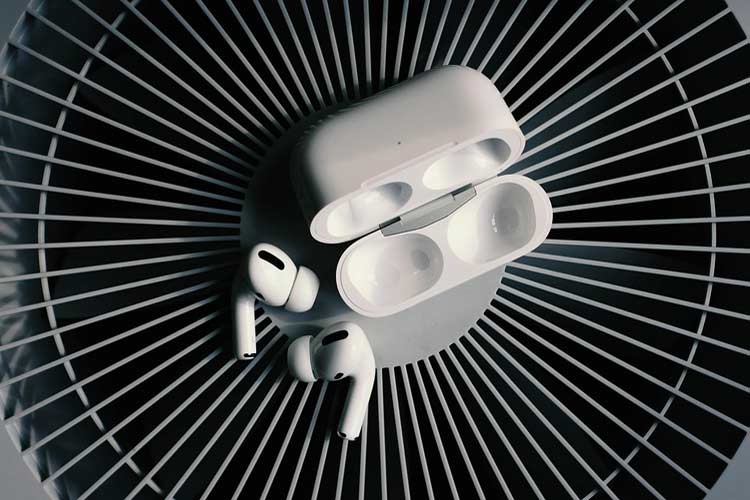
An increase in demand for wireless headphones and infotainment devices, an increase in demand for miniaturized wearable electronic devices for health monitoring, emerging technological advancements are the major reasons contributing to the increase in the market growth of the hearables.
The 21st century has witnessed remarkable advances in technology and the way hearing devices are marketed and sold has also changed. The global economy as we all know has been greatly affected by the COVID-19 pandemic; manufacturers around the world had to stop manufacturing more and more products, with hearables, not an exception. However, with the end-users being quarantined, the demand for hearables remained almost the same. It is predicted that by the end of 2025, there will be over 2.6 billion users of in-ear devices.
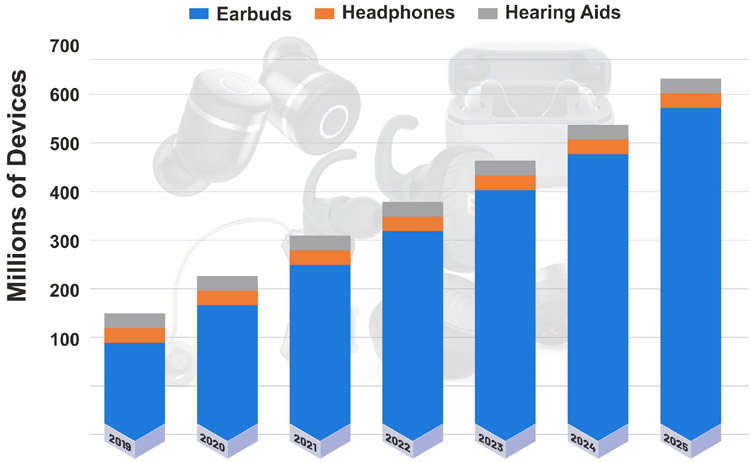
Who all are the major players in the Heaarable Market?
Starting from Apple to Xiaomi, Samsung Electronics, Bose Corporation, Phonak, Oticon, LG Electronics, Sony Corporation, Jabra (GN Store Nord A/S) and others, there are many companies that are there in the market competing in the quest to provide the best hearing experience to the end customer.
Smart Hearable Devices Launched Recently
1. MaskFone
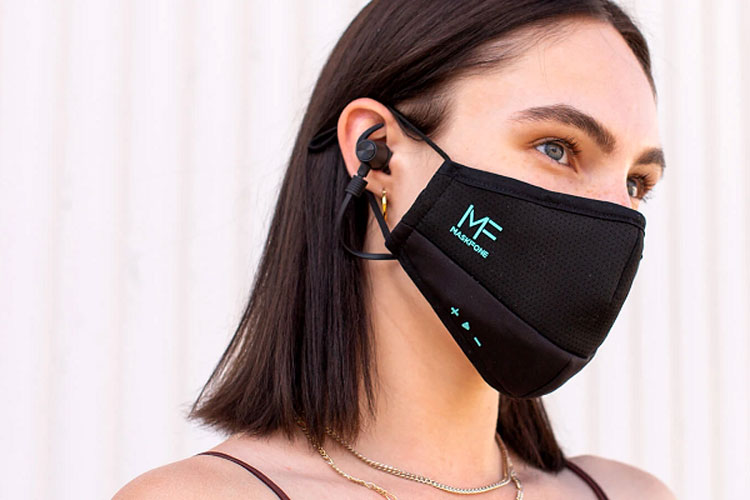
This new voice Assistant-enabled mask and earbuds combo is one of the most interesting hearable developed by smart tech developer, Binatone. It’s a timely product developed by combining wireless earbuds with an N95 to help limit the spread of COVID-19. The wireless earbuds last for about 12 hours of use and link with the Hubble Connect app on smartphones. It’s the integration with a microphone and a detachable (for washing) mask that makes it all the more intriguing.

In the year 2019, Apple launched Airpods Pro with active noise cancellation and superior, immersive sound features. Voice-activated Siri, Audio sharing, and Eartip fit test are the additional features of the Apple Airpods.

Last year, Xiaomi launched Mi AirDots 2 SE that offers smart voice control along with touch controls for volume and track change.
What does the future hold for Hearable Technology?
Hearables with biometric, proximity, movement, and other sensors are being developed to improve the listening experience. IoT too is playing a major role in making hearable devices unbelievably advanced. Today’s hearables can do more than just amplify sound. The new processors in the latest smart devices can provide always-on edge processing that enables endpoint devices like smart earbuds to handle increasingly complex computations directly on the device without sending processes to the cloud.
Smart wireless earbuds are used for short-range and long-range inter-team communication via wireless connectivity technologies like a cellular network, Bluetooth Wi-Fi, digital enhanced cordless telecommunication (DECT), etc. New technological advancements like the inclusion of sensors, Bluetooth, Active-Noise Cancellation (ANC) are giving rise to new capabilities. From photoplethysmogram (PPG) sensors that can determine the consumer’s blood pressure through the connected hearing device to hearables with noise cancellation capability through the addition of low-power chipsets, headphones with artificial intelligence (AI) that can access hearables to ensure that they are calibrated to your profile; there is no end to the list of advancements taking place in the hearables sector.
With so many technological developments going around, our imagination can go wild thinking of all the possibilities. Programmers and engineers are continuously coming up with ideas to jolt us into a new age of hearables. The way you plug in your earphones or headphones might change maybe in some years from now. Frankly, hearables are presenting an unprecedented opportunity for innovation!





